NCA bombing: The prosecution case against suspect Domenic Perre – Part 2. How the bomb was made
It was powerful enough to kill one man, blind another and leave all of SA in shock – but how was the NCA bomb built?
Police & Courts
Don't miss out on the headlines from Police & Courts. Followed categories will be added to My News.
The bomb that would kill Detective Sergeant Geoffrey Bowen and injure Peter Wallis was collected from the Adelaide GPO just after 7am on Wednesday, March 2, 1994.
It was conveyed, by an unsuspecting security guard, up the elevator of the GPS Credit Union Building on Waymouth St.
The National Crime Authority occupied the 11th and 12th floors – Bowen, who was expecting a parcel, retrieved it himself and took it to his office.
Mr Wallis noticed the parcel’s sender was recorded as “IBM Promotions” and the address on it “written with a stencil of the type children might use for school work”.
Inside the standard Australia Post express bag was a brown box marked “Investigator Geoff Bowen” and a label claiming it contained a modem.
“Bowen used scissors to slit along one of the pieces of tape at the front of the box,” prosecutor Sandi McDonald, SC, writes in her Supreme Court opening address.
“He then started to slit open a second piece of tape … it was at about that point in time that whatever Bowen did caused the bomb to detonate.
“It was no accident that Bowen died as a result of this bomb detonating – he was the intended target.
“The bomber intended that the parcel bomb end up in the hands of Bowen and that, when he opened it, his body would suffer the full force of the explosion.
“If there were not such clear evidence that this in fact happened, it would be hard to believe that such a plan could be so well executed.
“Geoffrey Bowen was the target and he ended up dead … it is the prosecution case that this was personal.”


TRACKING BOWEN DOWN
According to the prosecution case, Domenic Perre – fuelled by the loss of his $20 million drug crop, his loathing for police and hatred for Bowen – made and sent the bomb.
Perre, 63, has denied doing so, and pleaded not guilty to having murdered Bowen and attempting to murder Mr Wallis, who suffered extensive injuries and burns.
However, in her 60-page written opening address, Ms McDonald says there can be no doubt Perre is responsible.
She asserts Perre sent the bomb to Bowen’s workplace after first trying and failing – despite the aid of private investigator – to locate the officer’s home address.
Several people “totally unrelated” to Bowen, yet who shared his surname, received calls looking for him.
In some cases, the caller – allegedly Perre or his “close friend” the investigator – claimed they were carpet cleaners and needed an address in order to perform work.
ZIPPY BOX
“The person who constructed the bomb must have had knowledge and means to build it, whether by themselves or with the assistance of others,” she writes.
“Perre had both the knowledge and the means … he had access to materials and information on how to create the bomb that killed Bowen and seriously injured Mr Wallis.”
Writing “IBM Promotions” on the parcel was, she alleges, no quirk of chance – Perre had recently had a laptop repaired by the company.
He was also a customer of Dick Smith Electronics at Smithfield which carried, amongst its inventory, one of the bomb’s components – an electrical project called a “zippy box”.
The store was the only source in SA of another of the bomb’s pieces – an NTE mini micro switch.
Perre, Ms McDonald alleges, had asked several Dick Smith staff members about 12 volt timers, micro switches and zippy boxes prior to the bombing.
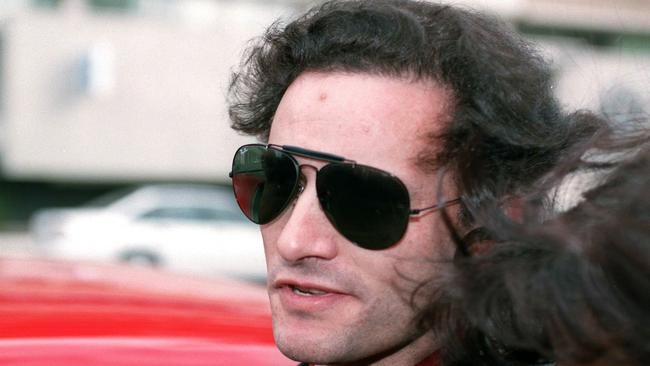
She alleges he had also discussed the devices with Allan Chamberlain – his friend from the Central Firearms gun shop.
“About four weeks before the bombing, Perre told Chamberlain that he wanted a timer that would exceed 24 hours’ duration and possibly days,” she writes.
“The other issue raised by Perre was voltage … he said that the operating voltage had to be more than six volts.”
Chamberlain allegedly told Perre he would have to use a relay and nine volt battery.
“Perre was unhappy with that suggestion, stating that size was an issue and that would make the device too big,” she writes.
Another witness, she states, saw Perre sitting in the rear office area of Central Firearms a few weeks later, “soldering something”.
“Perre was working on and soldering a black-coloured switch with holes in the base that you could use for screws,” she writes.
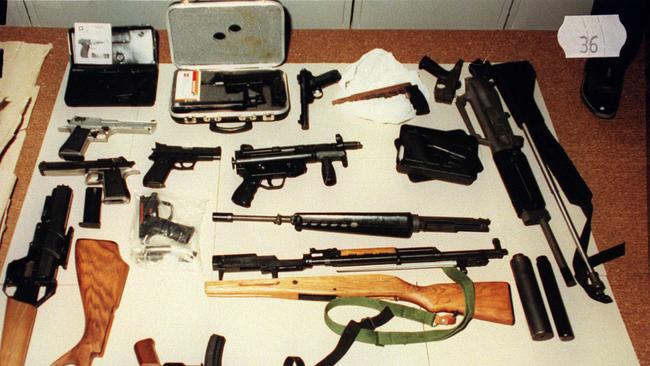
GUNS, DETONATORS AND RED PHOSPHORUS
Chamberlain had another connection to Perre, Ms McDonald asserts – he was looking after his guns.
“In mid to late 1993, Perre approached Chamberlain and asked whether he had access to a secure place in which he could store his firearms so they couldn’t be found,” she writes.
“He said he was having trouble regarding his family members and that they had been arrested for a drug crop in the NT.
“He said that he was concerned that his house would be searched and he would lose his gun collection.”
Chamberlain agreed to help, Ms McDonald says, storing dozens of firearms under a false floor in his shed at Wynn Vale
On March 1, 1994 – the day before the bombing – he also took possession of books, three lengths of detonation cord, 11 detonators and a telephone debugging device.
Ms McDonald says two of those detonators were, aside from their serial numbers, “otherwise identical to the detonator used” in the NCA bomb.
The device’s other essential component was red phosphorous, identifiable by the red, oily substance left after the explosion.
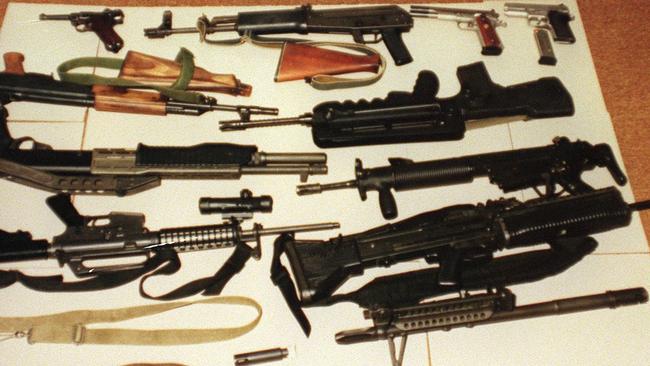
An uncommon chemical, used mostly for safety matches and smoke flares, red phosphorous was stocked by few SA retailers.
One of those was ACE Chemicals which, in 1994, counted Perre among its customers.
Ms McDonald says former ACE employees will testify Perre came into their premises over the course of “two or three years”, always paying for goods with cash.
While under surveillance over the $20 million Hidden Valley drug crop, he was followed – by NCA officers – to ACE, and had their marketing materials in his house.
In 1995, a year after the bombing, police launched “Operation Zoom”, hoping to tie Perre to both Bowen’s murder and the methylamphetamine trade.
Ms McDonald says a police informant reported back that drug dealers were using red phosphorous to cook the meth – and Perre was unhappy about it.
“Perre was asked if he could obtain red phosphorous and responded that he would ‘rather stick his dick in a chopping block’,” she writes.
“Perre pointed to his chest region with his left pointer finger and mouthed the word ‘bomb’.”
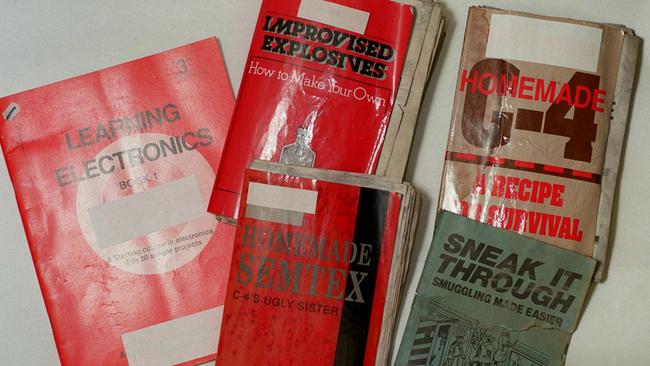
C4’S UGLY SISTER
By 1994, Perre was a qualified machinist, fitter and turner who had also been trained in surveillance techniques and run his own security business.
Those abilities, Ms McDonald asserts, showed he knew how to build a bomb – or, at the very least, where to turn in order to augment his skills.
The books Perre had asked Chamberlain to hide, she says, were titled:
Improvised Explosives: How to Make Your Own
Homemade Semtex – C4’s Ugly Sister
Homemade C4: A Recipe for Survival
Zips, Pipes and Pens
Breath of the Dragon: Homemade Built Flamethrowers
Homemade Grenade Launchers: Constructing the Ultimate Hobby Weapon
Expedient Hand Grenades
Sneak It Though: Smuggling Made Easier
“About two weeks before the bombing, Perre attended at Central Firearms and requested the return of three books,” she writes.
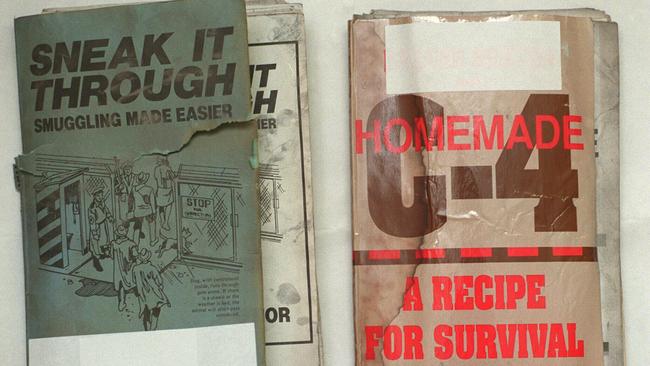
“The following day, Chamberlain provided the books to Perre, who returned them the day before the bombing.
“It is the prosecution case the choice of these three publications is highly relevant.”
The first book Perre wanted back, she says, was Improvised Explosives: How to Make Your Own, which bears the warning “not for beginners”.
It includes chapters on fuses and detonators, electrical timers and how to prepare “tamper-proof bombs”.
The second, Homemade Semtex – C4’s Ugly Sister, explains how to combine chemicals to make the explosive, warning the attempt “more likely than not will lead to injury or death”.
Homemade C4: A Recipe for Survival is concerned with creating the ”big-league explosive” that “detonates at a speedy 26,400 feet-per-second”.
Perre’s fingerprints were, Ms McDonald alleges, found on pages 30 and 31 of that book.
She also points out Sneak It Though: Smuggling Made Easier, which promises “tactics that will give you a definite advantage when the going gets tough”.
One of its chapters, she says, describes how to extract chemicals from a detonator cord and “impregnate it into cardboard”.
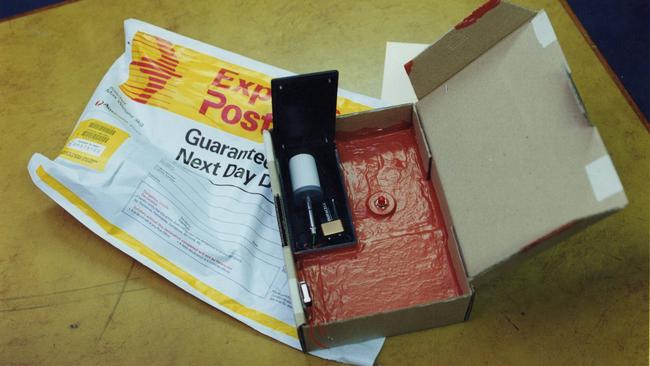
DIRECT LINE OF SIGHT
After the bomb detonated, it took time for Bowen and Mr Wallis’ colleagues to force their way into the devastated office.
“There were areas of fire and the room was filled with a grey-coloured smoke,” Ms McDonald writes.
“The window in the office had been blown out by the explosion and witnesses could see the smoke billowing out into the street.
“Mr Wallis was standing with his back to the western wall … he was black and bloodied and his clothing was burnt … he was saying that he couldn’t see anything and asking for help.”
The lawyer suffered burns to 35 per cent of his body, shrapnel and blast injuries to his face and permanent blindness in his right eye.
Ms McDonald says Bowen was found laying face down and groaning, but died shortly after due to “major” blast injuries.
At that moment, she says, Perre was driving – under surveillance by other NCA officers – through the northern suburbs.
By noon he was in the Adelaide CBD, appearing “frustrated” at any delays in his routine caused by other people.
“At 12.27pm, Perre drove into the Pitt St car park … he drove up to the rooftop,” she writes.
“He then parked his vehicle in an easterly direction in a position that gave him a direct line of sight to the blown-out window of the NCA building.
“From there, Perre exited his car and left the car park.”
Ms McDonald says witnesses saw Perre walking the edges of the police cordon around the bombing, standing under trees and watching ambulance crews.
At 1pm, she says, Perre approached an SA Police constable manning the cordon.
“Perre asked him what had happened … he responded that there had been an accident, and observed Perre look up into the vicinity of the 12th floor a number of times,” she writes.
“From where (the constable) was standing, you could clearly see where the bomb had exploded.”

INCREASING SUSPICIONS
The day after the bombing, Ms McDonald says, Allan Chamberlain was becoming concerned that Perre “may have been in some way involved”.
She says he called Perre about 11pm, suggesting they talk – in response, Perre attended Chamberlain’s home with his brother, Adam, in tow.
“Adam was considerably physically bigger than Perre and, up until that time, Chamberlain had had nothing to do with him,” she writes.
“Chamberlain raised his concerns with Perre about him being involved in the bombing – Perre denied it.”
The Perre brothers stayed for just 10 minutes, but returned the following day at 8.50pm.
At that point, Ms McDonald says, SA Police were inside conducting an interview with Chamberlain – causing the Perres to leave at speed, “almost colliding with a fence”.
On March 6, Perre allegedly left a message on Chamberlain’s answering machine saying: “It’s me, I want to know how you are, you get back to me as soon as possible.”
Chamberlain, she says, called back and rejected Perre’s suggestion they meet at a local hotel, explaining he was “under police scrutiny”.
“Perre asked Chamberlain if he was in trouble with the police and the extent of it … Chamberlain told him that he was in ‘deep shit’ and that police had found the guns on his property,” she writes.
“Perre responded ‘you may not be responsible for that’ to which Chamberlain replied ‘be real, they know they are your guns’.
“Perre warned Chamberlain to be careful, as his phone may be tapped, and the conversation concluded with Chamberlain agreeing to attempt to meet up with him shortly.
“That was the last occasion on which Chamberlain spoke with Perre.”
TOMORROW ON ADVERTISER.COM.AU
PART 3: “YOU KNOW WHO WE ARE, AND YOU KNOW WHAT HAPPENS TO PEOPLE WHO CROSS US”
READ PART 1 HERE — NCA BOMING: THE PROSECUTION CASE AGAINST DOMENIC PERRE





